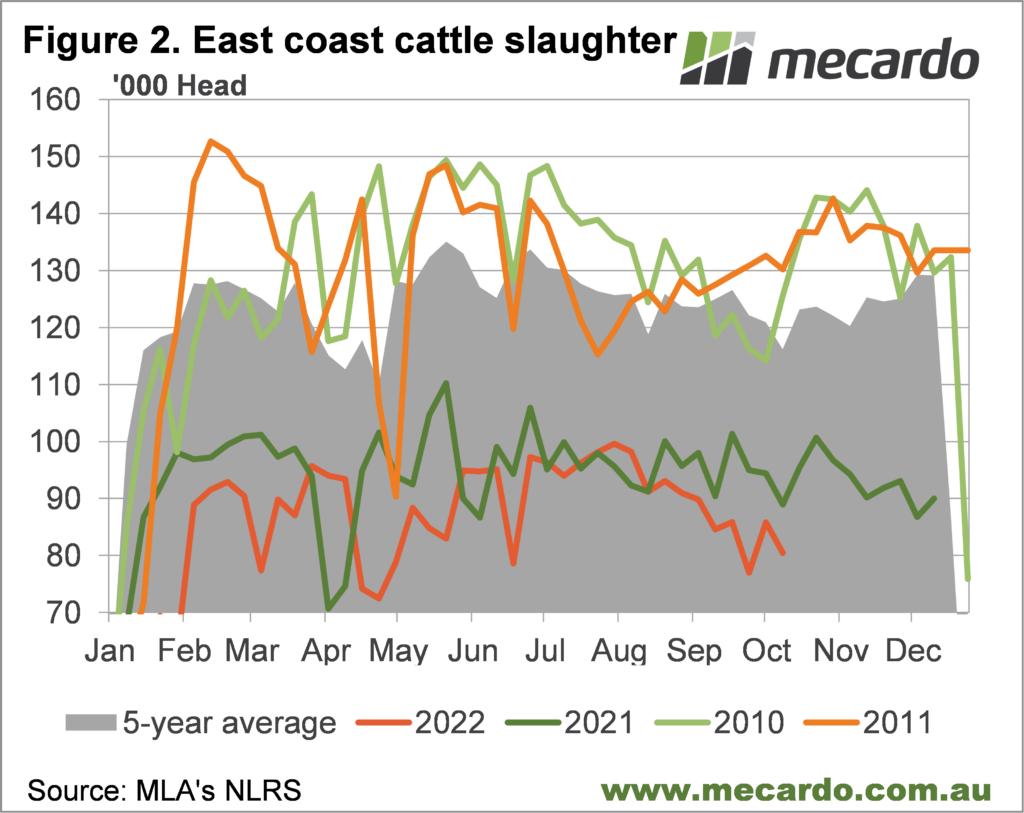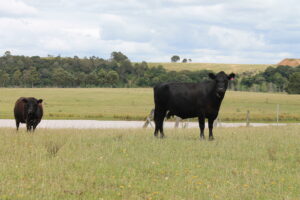It was a wet year already, but the rains last week, and forecast for the coming week threaten to make it one of the wettest on record. There is nothing like flooding event to throw livestock markets out of whack, and while short term impacts are obvious, we went looking for what might happen in the medium term.
The rains which have caused flooding in Victoria are just following a familiar pattern we have seen all down the east coast this year. The La Niña spring has been exceptionally wet, even more so than the last two. The closest year we’ve had to this one in recent times, in terms of rainfall and stage of the cattle cycle, was back in 2010.
It wasn’t quite as wet in 2010, but it was a bumper spring, which produced what was then a record east coast wheat crop. Figure 1 shows just how wet a spring it was in 2010.
If we go back and look at cattle supply from 2010 the first thing we notice is how much stronger slaughter was. Figure 2 shows Meat and Livestock Australia’s (MLA) weekly slaughter data was running 20-40% above where we are today. It shows just how far the herd has fallen in 12 years.
In 2010 cattle slaughter took a large dive in spring, with wet weather causing issues with transport, and more producers holding cattle back for weight gains. Slaughter did recover in November, but was still below the levels of earlier in the year.
The interesting part comes when we follow slaughter through to February 2011. A large spike in slaughter in February was due to many heavy cattle hitting the market have spent all spring and summer grazing abundant feed.
Price charts from the 2010-11 summer also make for interesting analysis. As expected, figure 2 shows cattle prices generally defied the usual trend of spring decline, to keep climbing all the way through summer.
Prices didn’t ease until late April in 2011, after the slaughter spike. Demand for cattle obviously remained strong until the weather got colder, and the usual late autumn price decline was exacerbated by the extreme price highs.
What does it mean?
The price fluctuations of 2010-11 looks minor compared to what we have seen this year, but it does give us a pointer to how prices might trend. The wet spring should see the herd rebuild continue, and limit slaughter cattle supplies. We are likely to continue to see a floor under cattle prices until it either dries out, or gets cold.
Have any questions or comments?
Key Points
- The widespread rain of the past week, and more forecast has this year looking like 2010.
- Cattle slaughter slumped in spring 2010, with supplies pushed into 2011.
- Cattle prices should find support for much of the rest of spring and summer.
Click on figure to expand
Click on figure to expand
Click on figure to expand
Data sources: MLA















